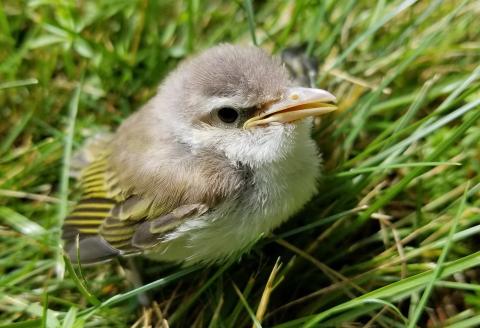Lists

Like many people spending lots of time at home, we’ve been keeping track of the birds at our house. Keeping track of sightings ends up with a list. In my walks in the woods, I often make a list of the tree species I see, along with shrubs and other plants. My tree lists tend to be longer, because I know them best and they tend to be the focus of my observations, but I’m learning more of the shrubs and other plants too. Birders are famous for their lists, with some recording all the species they’ve seen in their lifetimes, known as a life list.
I often ask my wife to review my writing and make suggestions. She teases me that my writing is sometimes “listy”, and she’s probably right. I do like a good list, especially when I’m writing about species observed. A longer list signifies more diversity. A list of numerous tree and shrub species tells me I’m in a diverse forest with numerous habitats; a longer list of bird species on a parcel of land indicates a wider variety of habitats. To that end, here’s the list of birds we’ve seen or heard on or nearby our parcel of land since spring, in no particular order:
- Woodcock
- Ruffed grouse
- Canada geese
- Mallard
- Snipe
- Red-wing blackbird
- Grackle
- American robin
- Chickadee
- Cedar waxwing – a personal favorite
- Blue jay
- Mourning dove
- Wild turkey
- Goldfinch
- Purple finch
- Barred owl
- Nuthatch
- Rose-breasted grosbeak
- Dark-eyed junco
- Eastern phoebe
- Downy woodpecker
- White-throated sparrow
- Song sparrow
- Raven
- Hummingbird
- Redstart – this was our most exciting observation – none of us had seen one before
- Alder flycatcher
- Northern flicker
- Turkey vulture – one appeared to be nesting in an abandoned hunting blind in the woods out back
- Great blue heron
- House wren
- Eastern bluebird
That’s thirty-two species. There are probably others that we didn’t see or whose songs we didn’t recognize. All of these were seen on or near our three and a half acre homestead. The length of this list is a result of the variety of habitats that we happen to live in the middle of. On our land, we have a mix of abandoned pasture, young second growth forest, a small lawn, and numerous landscape shrubs and trees. The pasture land is mowed every three years or so. When we do mow, it is after August 15, to give any nesting birds a chance. There’s a list of plants growing in the old pasture, many of which I don’t know yet, but the milkweed is good for monarchs and the goldenrod is one of the last flowering plants in the fall. Scattered through the old pasture and the woods are numerous wild apple trees. Tree species include white birch, gray birch, aspen, sugar maple, balsam fir, and white pine, with most trees in the sapling to pole size class. I’ve been cutting firewood over the past six years of ownership, which has created gaps in the canopy that encourage understory growth.
Adjoining our property is a forest of mixed species and ages, with rolling hills and ridges along with low forested wetlands. Also adjoining us is a wetland with cattails and willows. A shallow fire pond ringed by cattails sits across the road, in what was once a poorly drained pasture. It is now being reclaimed by willow and northern white cedar. This wetland is at the upper end of a larger complex of old beaver ponds fringed by abandoned pasture reverting to forest, second growth forest, and older forest further up the slope. Further up the road are old fields with willow and aspen along the edges.
This great variety of habitat types, borne of a variety of soil types, drainages, and land-use patterns, makes for a satisfying list of birds. This list shows the huge variety of organisms that can be found in a small area. One doesn’t necessarily need to go to large wilderness areas or exotic places to find biodiversity.
Note: Our bird identification was aided by field guides and bird ID apps. The main app we used was Merlin from the Cornell Lab of Ornithology. There are others available. Cornell also has an app called BirdNet that helps identify birds by sound.
